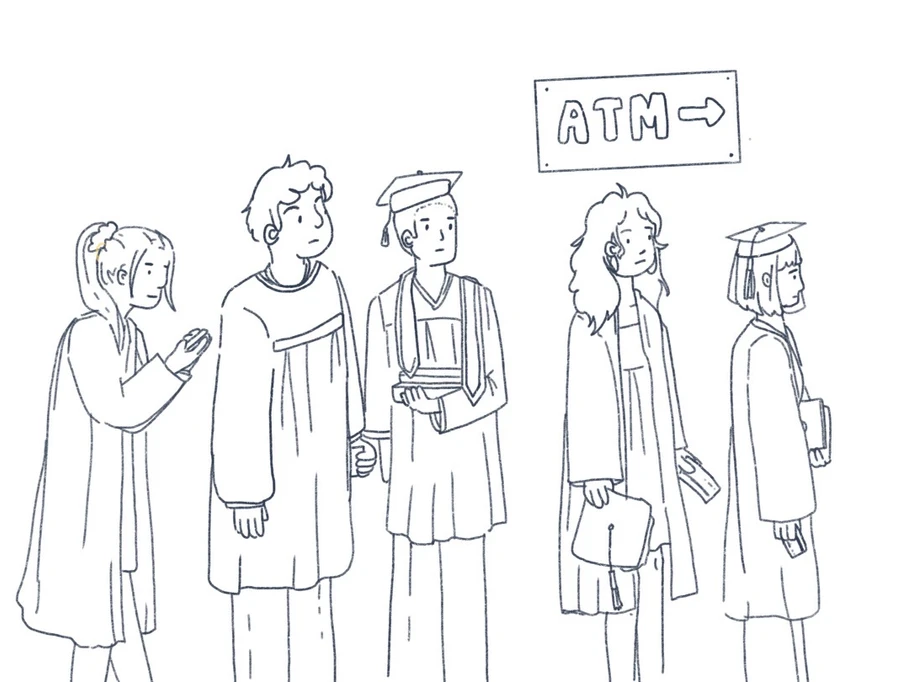Recent articles:

US POLITICS
17 Jan 2023 - Ava Loop
In 2022, a majority of American students departed college with debt. The United States standard loan outline1 dictates students pay off their loans over the course of a decade, but the reality is that this plan - created in 1992 - is outdated and unreasonable for many American young adults. A report by Georgetown University found that in the past 30 years, the cost of college has increased by a factor of nearly 170% while job wages for young adults have only risen by 19%. While this overwhelming disparity largely explains the loan crisis, it does nothing to resolve the 1.75 trillion dollars taken out in student loans across the U.S.
While students struggle to pay their dues, U.S. politicians have found themselves embroiled in a debate over President Joe Biden’s ambitious student loan forgiveness plan, one solution proposed to help ease the crisis. The fundamental part of the plan offers $10,000 dollars of student debt cancellation for individuals whose annual income does not exceed $125,000 and up to $20,000 of relief for Pell Grant recipients, grants provided to students with lower socioeconomic resources2. Other facets of the plan include the continuation of debt payment postponement, which was paused during the COVID-19 pandemic, through December 31st, 2022. Finally, Biden’s plan restructures how loans will be paid by current and future students. Biden’s plan lowers the amount of discretionary income borrowers are required to pay each month, covers unpaid monthly interest, and cancels debt after 10 years of payment, provided that the remaining balance is less than $12,000. Biden opened applications for cancellation in October of 2022, and has, according to White House reports, received almost 26 million responses. The plan is currently suspended due to legal complications; after six GOP states took the plan to a federal appeals court, the case is now set to appear before the Supreme Court in early 2023.
Republican groups have stated that Biden does not possess the authority to cancel debt without permission from Congress and that it will cause the private companies that service federal student loans in the GOP states filing the lawsuit–Missouri, Nebraska, Arkansas, Iowa, Kansas, and South Carolina–to lose profit. William Baude and Samuel Bray, law professors at University of Chicago and Notre Dame law schools, respectively, submitted a brief to the Supreme Court which challenges the plaintiffs’ legal standing. If the states’ case is built upon potential harm to private companies, they say, those companies should’ve brought forth the case instead.
Beyond Biden’s plans, resolving the issue of student debt requires support from Congress. Although loan forgiveness is something of a buzzword, many moderate Democrats don’t support debt cancellation, especially when implemented on a large scale. Instead, they favor other solutions in helping borrowers handle their debt, such as cancellation in bankruptcy. Minnesotan Senator Amy Klobuchar, for instance, advocates for refinancing loans with lower interest as an alternative. While the support for alternative plans varies, the logic remains the same: moderates are hesitant whether America can financially handle debt cancellation.
In contrast to the moderate Democrats’ quiet apprehension, Republicans have not hesitated to attack Biden’s plan. Rep. Tom Rice from South Carolina stated that “the knowledge that the government can forgive debt with the stroke of a pen will lead many borrowers to take on more debt in the future, not less.” He also questioned the legal soundness of the plan, since it was not voted on by Congress and instated via executive order. Marjorie Taylor Greene, on the other hand, claimed that it was “completely unfair” to forgive debt in light of other students who had worked hard to pay off their debt without government assistance as well as to taxpayers who had not gone to college, and as a result, would not benefit from the plan. The White House responded to these particular remarks with a simple Tweet: “Congresswoman Marjorie Taylor Greene had $183,504 in PPP3 loans forgiven.”
Action on the issue has stagnated because of the upcoming Supreme Court trial. Beyond the executive branch, debt cancellation initiatives remain unlikely to pass. Even if it did, it would not stop the never-ending stream of students who need to take out loans, but only accumulate more national debt. No matter what solutions are proposed, or even passed by Congress, the college debt crisis is indicative of a larger problem: what do we do about exorbitant tuition costs in the first place?
The William D. Ford Federal Direct Loan plan is the federal standard for repaying non-private student loans, which constitute 92% of the loans taken out in the United States. ↩
For married persons and heads of households, the maximum threshold to receive debt relief is 250,000 in joint annual income. ↩
The Payback Protection Program, an initiative created during COVID to help businesses to continue compensating their employees. ↩
Recent articles:


